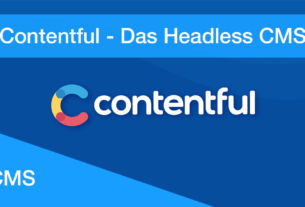
Explore The Best Pest Control Cost For Pest Service
Taking swift action is essential when unwanted pests invade your home or business. But before you call in the professionals, it’s important to understand the factors influencing pest control costs.
In this guide, we’ll delve into the intricacies of pricing, helping you make informed decisions. From understanding the types of pests to exploring cost-saving strategies, we’ve got you covered.
Table of Contents
Pest Control Cost: An Overview
Pest control cost can vary significantly based on several factors. Here’s a breakdown:
Types of Pests
Different pests require different treatment methods because their biology, behavior, and resistance levels vary widely. For instance, ants and spiders are often easier to control with standard pesticides, making the treatment cost relatively affordable.
However, dealing with stubborn pests like termites or bedbugs typically demands specialized techniques and more expensive treatments due to their resilience and ability to hide in hard-to-reach places.
Size of Infestation
The size of the infestation directly impacts the cost of pest control services. Smaller infestations can often be resolved with a single treatment, which is generally less expensive. In contrast, larger infestations might necessitate repeated visits and ongoing maintenance to ensure complete eradication, resulting in higher overall costs as time and resources are expended.
Location
Geographic location plays a crucial role in determining pest control costs. The prevalence of specific pests in your area can affect the demand for pest control services and pricing. In regions where certain pests are more common, prices may be lower due to increased competition among pest control companies. Conversely, in areas with unique pest challenges or seasonal infestations, costs may be higher as specialists may be required.
Method of Treatment:
The choice of treatment method significantly influences the overall cost of pest control. Chemical treatments are often less expensive initially but may require ongoing applications for lasting results, increasing the long-term cost. On the other hand, eco-friendly or non-chemical solutions tend to be more costly upfront. Still, they can offer sustainable pest management and potentially lower long-term expenses by reducing the need for frequent treatments.

Property Size
The size of your property is a critical factor in determining pest control costs. Larger properties require more time, labour, and materials to inspect, treat, and protect against pests. Consequently, the cost of pest control for a larger property is generally higher than for a smaller one, as it demands more resources to ensure thorough coverage and effectiveness in pest management.
Factors Affecting Pest Control Costs
Understanding the factors influencing pest control costs is essential to budget wisely:
Pest Type and Severity
Identifying the pest type and assessing the severity of the infestation is critical because more resilient and widespread pests, like bedbugs or termites, may require several rounds of treatment to eradicate them completely. The severity of the infestation also impacts the choice of treatment method, as more severe cases often demand stronger, potentially costlier solutions.
Treatment Method
The treatment method choice is influenced by the type of pest you’re dealing with. While chemical treatments can be highly effective for severe infestations, they tend to be more expensive due to the cost of the chemicals and the expertise required for their application. Non-chemical alternatives like traps or heat treatments may be more affordable and environmentally friendly for specific pests.
Frequency of Service
Deciding between a one-time treatment or ongoing service depends on your pest control needs. One-time treatments are suitable for isolated infestations, but regular maintenance plans are advisable for long-term prevention and peace of mind. However, these plans come with additional costs, which should be factored into your budget.
Location
The cost of pest control services can significantly differ by region. Urban areas with higher living costs often have higher service fees, reflecting the overall cost of doing business in those areas. It’s essential to consider your location when budgeting for pest control services to ensure that you account for potential price variations based on your geographic area.
Cost-Saving Strategies
Now that you understand the factors at play, here are some strategies to keep pest control costs in check:
Preventative Measures
Investing in regular inspections and preventive measures for your property is a proactive approach that can pay off significantly in the long run. Regular inspections can help identify potential pest issues before they escalate into major infestations, saving time and money in costly extermination efforts. By addressing problems early, you can also reduce the risk of damage to your home or property.
DIY Solutions
For minor pest problems, such as a few ants or occasional spiders, considering DIY solutions can be a cost-effective option. You can purchase store-bought traps and repellents to address these issues. However, it’s essential to exercise caution and follow instructions carefully, as ineffective DIY attempts may not only fail to solve the problem but could worsen it or lead to unintended consequences like chemical exposure.
Multiple Quotes:
When seeking professional pest control services, it’s wise not to settle for the first company you come across. Collecting multiple quotes from different providers allows you to compare prices, services offered, and treatment plans. Additionally, checking customer reviews and verifying the credentials of the pest control companies will help you make an informed decision, ensuring that you receive quality service and value for your money.
Maintenance Plans
If you live in an area prone to recurring pest issues, it’s worth inquiring about maintenance plans offered by pest control companies. These plans often provide scheduled treatments and inspections throughout the year, helping to prevent pest problems from resurfacing.
In the long term, maintenance plans can offer cost savings compared to one-time treatments, as they address issues on an ongoing basis and reduce the risk of more significant infestations that could incur higher expenses.
Frequently Asked Questions
How much does pest control cost on average?
Pest control costs vary, but you can expect to pay anywhere from $100 to $300 for a one-time treatment. Severe infestations or ongoing services may cost more.
Are eco-friendly pest control options more expensive?
Eco-friendly options can be slightly more expensive, but they offer environmentally conscious solutions that may be worth the investment.
What pests require professional treatment?
While some pests can be managed with DIY methods, termites, bedbugs, and rodents often require professional intervention due to their resilience and potential health risks.
Do pest control companies offer guarantees?
Many pest control companies provide guarantees for their services. Be sure to ask about their policies and what is covered.
Can I negotiate pest control prices?
Some pest control companies are open to negotiation, especially for larger properties or ongoing services. It doesn’t hurt to ask for a better deal.
Are there any natural remedies for pest control?
Yes, natural remedies like diatomaceous earth, essential oils, and vinegar can help deter pests. However, their effectiveness may vary.
Don’t Let Pests Take Over Your Space
Understanding pest control costs is crucial for making informed decisions about unwanted pests. You can budget effectively by considering factors like pest type, treatment method, and location. Remember to explore cost-saving strategies and gather multiple quotes to find the best pest control solution for your needs.
Don’t let pests take over your space. Take control of the situation financially and practically, and enjoy a pest-free environment.








